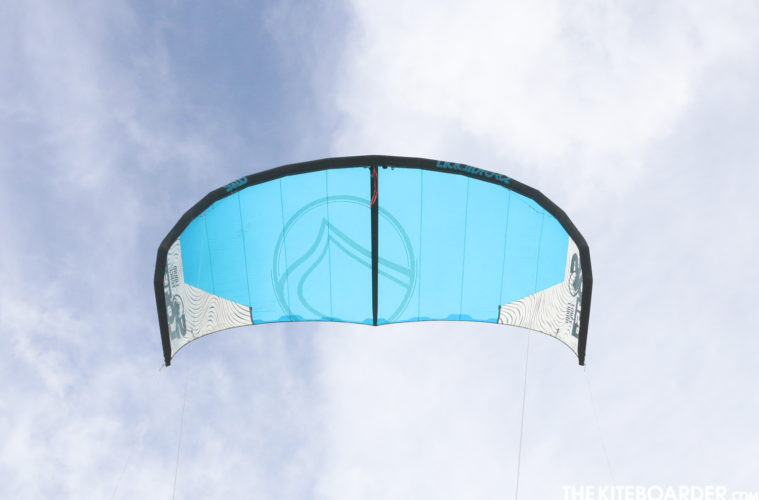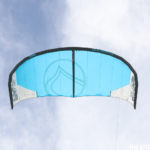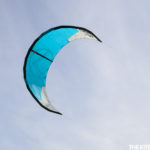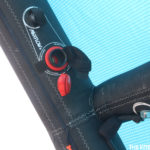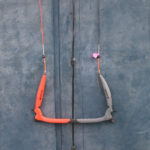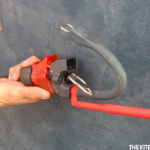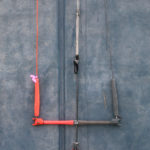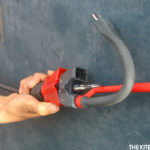Sizes Available: 3.5, 5, 7, 9, 12, 15.5m
Sizes Tested: 15.5m
Liquid Force Says:
Light as air, the 2020 Solo offers jet-setting freeriders and hydrofoil enthusiasts a kite with ideal performance characteristics based on an industry-proven, easy-to-fly single strut platform. The 2020 Solo was completely redesigned to make the kite more forgiving, lighter, and more nimble in the sky. The Solo continues to offer a smooth and comfortable sheeting range throughout the powerband, granting easy access to power and control. When it comes to marginal conditions, the Solo has an extremely efficient, lightweight shape that makes its light wind performance a force to be reckoned with. Simultaneously, the profile of the 2020 Solo makes dumping the gusts out of the kite effortless. We wanted the Solo to be so easy to use that your focus is having fun on the water and nothing else.
Visit for more info: https://liquidforcekites.com/product/2020-solo/
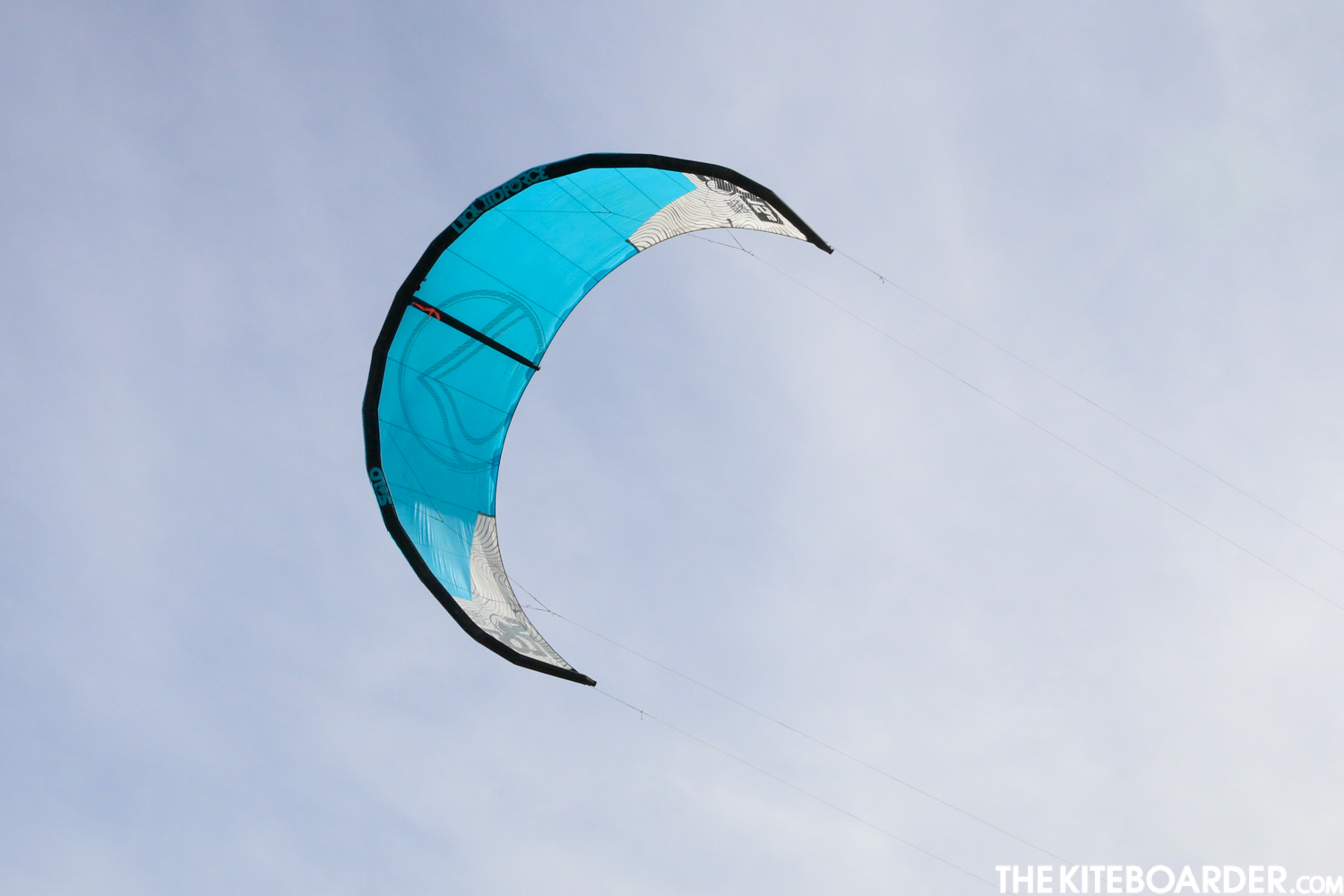
TKB Says:
The Solo was the first platform to solve the problems that came with single strut kites and much like its first-mover status in the single strut niche, it is now once again shaking up the performance and feel of light wind kiteboarding. The Solo has a noticeably thinner diameter leading edge and the planform looks a smidge higher aspect with its C-shape looking a bit more open. In terms of inflation, the Solo comes with the MaxFlow large diameter inflation valve, which has one of the widest mouths for the fast movement of air of any industry design, and although it requires a proprietary LF pump nozzle to attach to the end of your hose, LF has you covered with a secondary standard 9mm valve if you lose the extra-wide nozzle that comes with every kite. The pump up on a kite even as big as a 15.5m feels refreshingly fast with the MaxFlow system. The Solo uses a single setting bridle that got redesigned for 2020 with the introduction of two aluminum sliders that assist with changing the angle of attack. The front bridle pigtails end in loops and the wingtip attachment points end in three knots for tuning/rigging power settings. The wingtip attachment points give you three settings to dial in your bar pressure with the stock setting in the middle, and less bar pressure as you switch to the setting towards the end of the wingtip.
The first thing we locked onto with the 15.5 was how the turn initiation feels especially quick, with input from the bar going directly into the canopy to deliver a crisp turning response that left the team impressed. The turning path seemed to have a bit wider of a steering arc while the turning speed was sufficient to place the Solo where it needed to be at all times. The power delivery on the Solo is really smooth and has a good progressive feel over the throw of the bar. The range of pull seems to achieve a happy medium for a light wind kite ”” it has some middle of the road grunt that works together with extra maneuverability to create power that is never overbearing and yet is always accessible when you need it. Riding a 15.5m single strut well above its wind range will result in extra depower and the luffing canopy movement will find its way back into the bar, and that’s why the Solo shines best on the low and medium end of its wind range. The Solo’s increased lift feels good for medium-sized jumps that are notably fun for low wind sessions and come with a solid amount of hangtime. It’s clear that the Liquid Force team focused on shaving weight from the new airframe and it paid off not only in more agile and responsive flying but in user-friendly performance and ease of use. The 15.5m is probably overkilling it for all but the largest foilboarders but is a great option for casual freeride twin tip riders to juice up their low-wind sessions and aficionados of surfboard bump and jump cruising.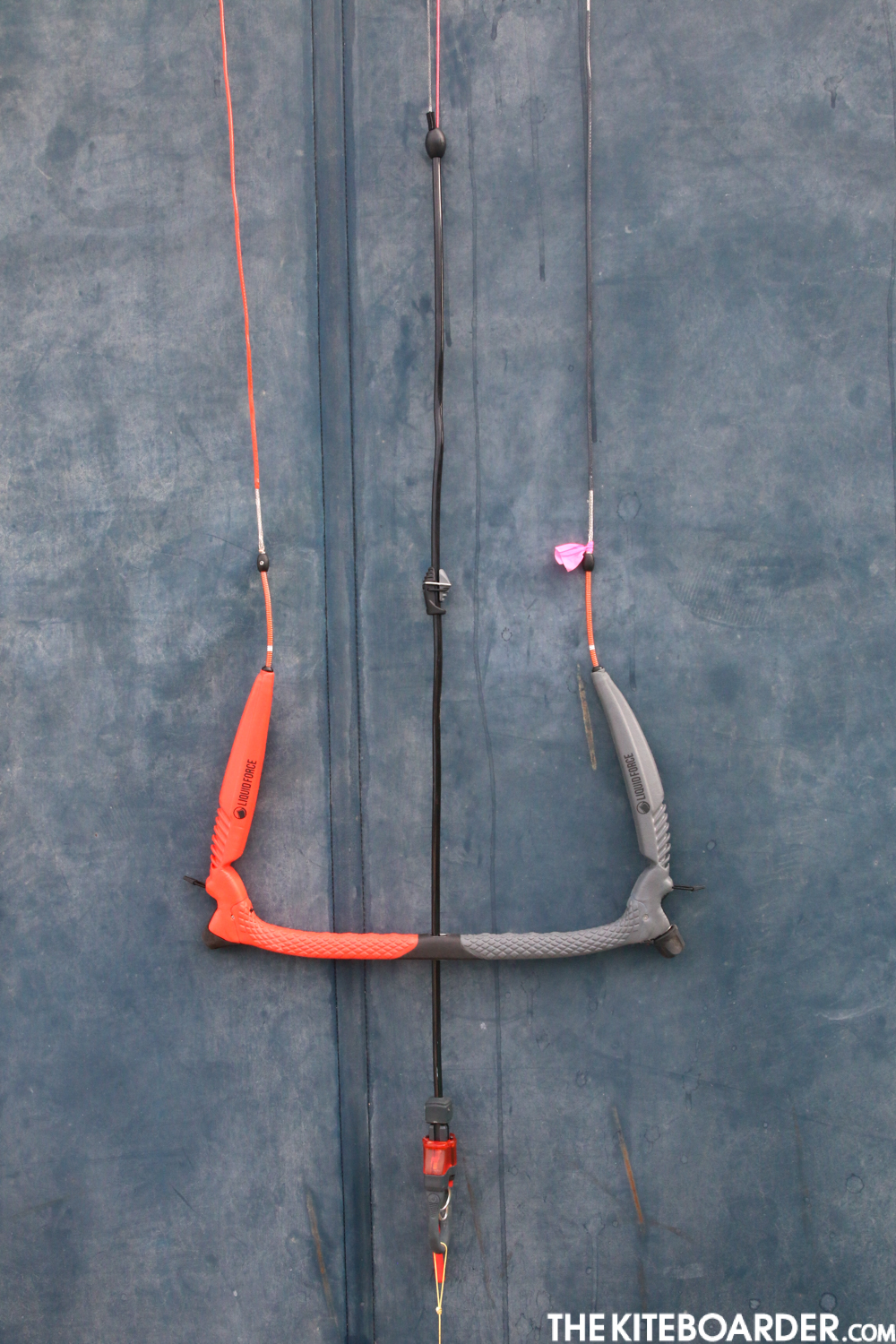
The Solo can be flown with either the Mission Control bar or the all-new Direct Drive control bar.
The Direct Drive is LF’s recent addition to the lineup that packs an expansive list of features while still keeping the design clean and simple. It belongs to a new class of bars that shift the power tuning from the center lines over to the back lines while integrating the mechanics into the internal space of the bar. This accomplishes two things: first, it removes the tuning clutter from your center lines and second, it puts the power tuning at your fingertips. These new internal bar power systems adjust the tuning of the kite’s power from the inside of the bar by altering the length of the outside lines (compared to the traditional centerline power adjustment configurations). The Direct Drive features a single centerline depower safety system in a fixed-length bar (52cm) which has the center lines ending in a loop and the outside lines ending in a knot for rigging purposes. The bar uses a PU-coated depower/throw line and an adjustable stopper to adjust the travel. Because the kite’s tuning is all handled inside the bar you can set the sliding stopper for exceptionally long throw and the upper part of the bar is incredibly clean. The actual tuning is handled with a dial that is located on the lower right side of the bar. You twist the dial clockwise to power up the kite and to depower you push the dial to the side and it pays out an extra inch or so of outside line length. The rotating dial is on the smaller side to remain unobtrusive, which means it helps in overpowered conditions to sheet out the bar to reduce load on the outside lines when twisting the knob to depower. Testers noted that pushing the knob to power up was easy, and they liked the visual indicators above the floats that show the bar’s current tuning status (powered up vs depowered). We particularly liked how adjustments happen at even and controlled intervals, unlike when you use a cam cleat or a power strap where the adjustments tend to vary greatly on circumstances. Unlike other bars with internal tuning systems on the market, this version has various apertures underneath and on the side of the bar where you can see the internal pulley mechanism. We assume this non-sealed approach allows you to clean the sand out of the bar after every session, and perhaps that’s a habit worth getting into. The bar upwardly bends at the ends that tend to offer a nook for your hands if you have a wide grip stance and the grip rather than being perfectly circular, has a rounded top with a squarish bottom to accommodate the inner mechanics. The diameter of the grip is larger with solid EVA grip that is comfortable and the weight is middle of the road, which is impressive given the extra mechanics. The bar ends are padded and feature integrated floats and retractable bungees. Overall, testers liked the clean rigging and mechanics of this bar, noting specifically the magic of having simple clean space between you and your kite.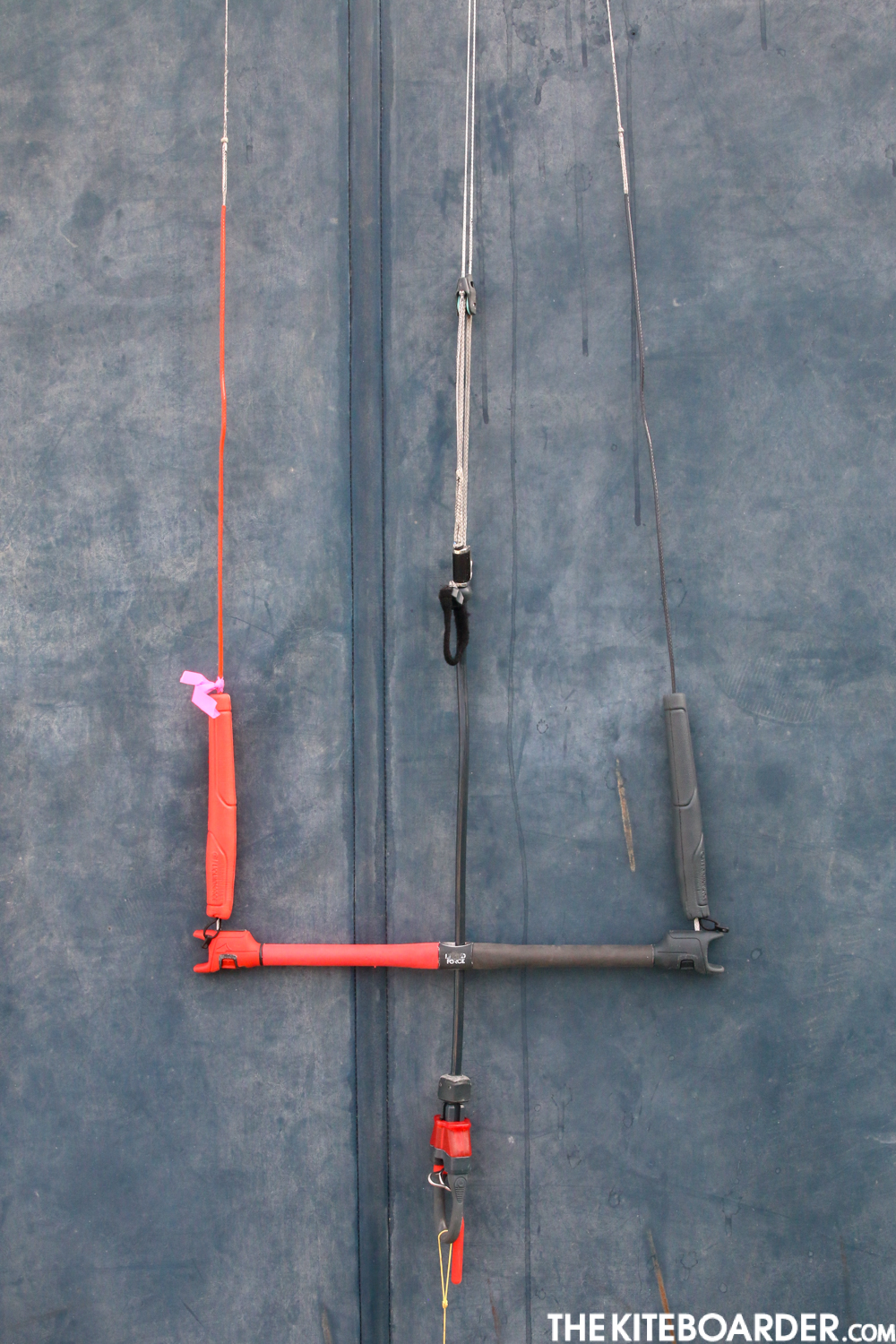
The Solo can also be ridden with the Mission Control bar which features an adjustable length bar (available in two sizes: 40/46cm, or 49/55cm), a durable large diameter PU coated sheeting/throw line, no sliding stopper, and a single centerline safety depower with an adjustable V (high or low by loosening a nut and changing height) ”” the safety line is routed down the center of the PU coated sheeting/throw line which boasts less friction when moving the bar up and down the throw. The center lines end in a knot (color-coded red and gray) and the outside lines end in loops (color-coded red and gray). The Mission Control bar uses a stainless steel depower cam cleat and Velcro on the depower control toggle to keep any excess slack from tangling. The Mission Control comes with a quick-release design that features a below the bar hand swivel/release with an integrated travel guard above the push away quick release. The quick release is designed to readily click into an auto-reset position when the release handle is pushed away with the idea that reassembly on the water is quick and super easy by pushing the loop back into its gate. When you activate the safety system the handle cocks into its locked position, then for reset all you have to do is push the end of the loop back into the gate and the release handle will drop down. The bar’s throw length is not adjustable and its floats are no longer integrated into the bar ends which is purposeful for a more flexible connection between the bar and the outside lines. The tips of the bar are soft and the bar end color coding is a bit more pronounced with both the grip and the bar end/float in red coloring to set off the left side. The outside leader lines allow riders to adjust the length of the outside lines for stretch or tuning with three knots (stock setting is the shortest setting). The grip is smooth with a fairly narrow diameter and a rubbery grip. The Mission Control bar offers a good mix of features and safety in a very clean but functional package.
Visit for more info on the bar: www.liquidforcekites.com/product-category/control-system/

Want to view all our 2020 Freeride, Light Wind and Wingsurf Gear Reviews in one convenient digital guide? Get free access HERE. If you’re already a subscriber, thank you for your support! Log into your account to view our 2020 Freeride Gear Review Guide.


